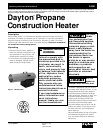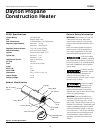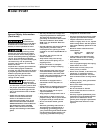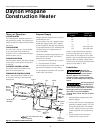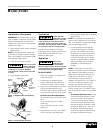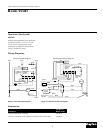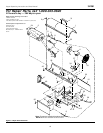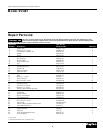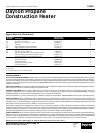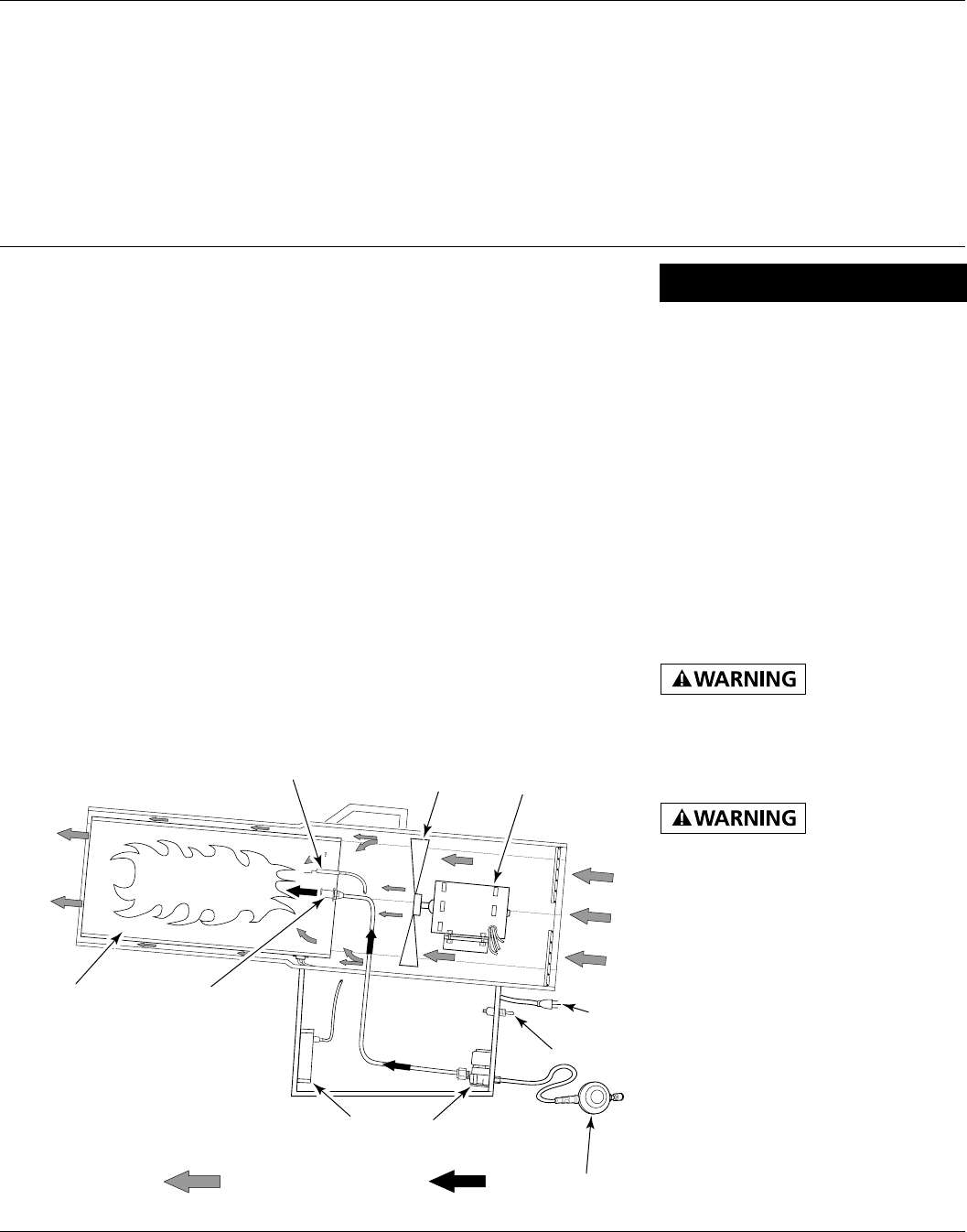
Dayton Operating Instructions and Parts Manual 3VG81
4
Dayton Propane
Construction Heater
®
Air For Combustion
And Heating
Fuel
Combustion
Chamber
DSI
Ignitor
Clean
Heated
Air Out
(Front)
Fan
Solenoid
Valve
Nozzle
Motor
On/Off Switch
Theory of Operation
THE FUEL SYSTEM
The hose/regulator assembly attaches to
the propane gas supply. The propane gas
moves through the solenoid valve and out
the nozzle.
THE AIR SYSTEM
The motor turns the fan. The fan pushes
air into and around the combustion
chamber. This air is heated and provides a
stream of clean, hot air.
THE IGNITION SYSTEM
The direct spark ignitor (DSI) sends voltage
to the ignitor, which ignites the fuel and
air mixture.
THE SAFETY CONTROL SYSTEM
This system causes the heater to shut
down if the flame goes out.
TEMPERATURE CONTROL SYSTEM
Built-in thermostat allows heater to cycle
on and off to maintain consistent area
temperature.
Figure 3 - Cross Section Operational View
Air for Combustion and
Heating
Fuel
Power
Cord
Propane Supply
Propane gas and propane tank(s) must be
provided by the user.
Use this heater only with a propane vapor
withdrawal supply system. See Chapter 5
of the Standard for Storage and Handling
of Liquefied Petroleum Gas, ANSI/NFPA 58.
The local library or fire department will
have this booklet.
The amount of propane gas ready for use
from propane tanks varies. Two factors
determine this amount:
1. The amount of propane gas in tank(s)
2. The temperature of tank(s)
The chart below shows the number of 100
pound tanks needed to run this heater.
Do not operate this product with any tank
smaller than 100 pounds.
Less gas is vaporized at lower tempera-
tures. You may need two or more 100
pound tanks or one larger tank in colder
weather. Your local propane gas dealer will
help you select the proper supply system.
The minimum surrounding-air temperature
rating for each heater is -20°F.
Temperature (ºF) Number of
at Tank 100 Lb. Tanks
32° 2
20° 2
10° 3
0° 3
-10° Use larger tank
-20° Use larger tank
Installation
Review and
understand the
warnings in the Safety Information
Section, pages 2 and 3. They are
needed to safely operate this heater.
Follow all local codes when using this
heater.
Test all gas piping
and connections
for leaks after installing or servicing.
Never use an open flame to check for a
leak. Apply a mixture of liquid soap
and water to all joints. Bubbles
forming show a leak. Correct all leaks
at once.
1. Provide propane supply system (See
Propane Supply).
2. Connect POL fitting on hose/regulator
assembly to propane tank(s). Turn POL
fitting counterclockwise into threads
on tank. Tighten firmly using wrench.
Tighten regulator with vent pointing
down.
3. Connect hose to inlet connector.
Tighten firmly using a wrench.
Hose/
Regulator
Assembly
Cool
Air
In



